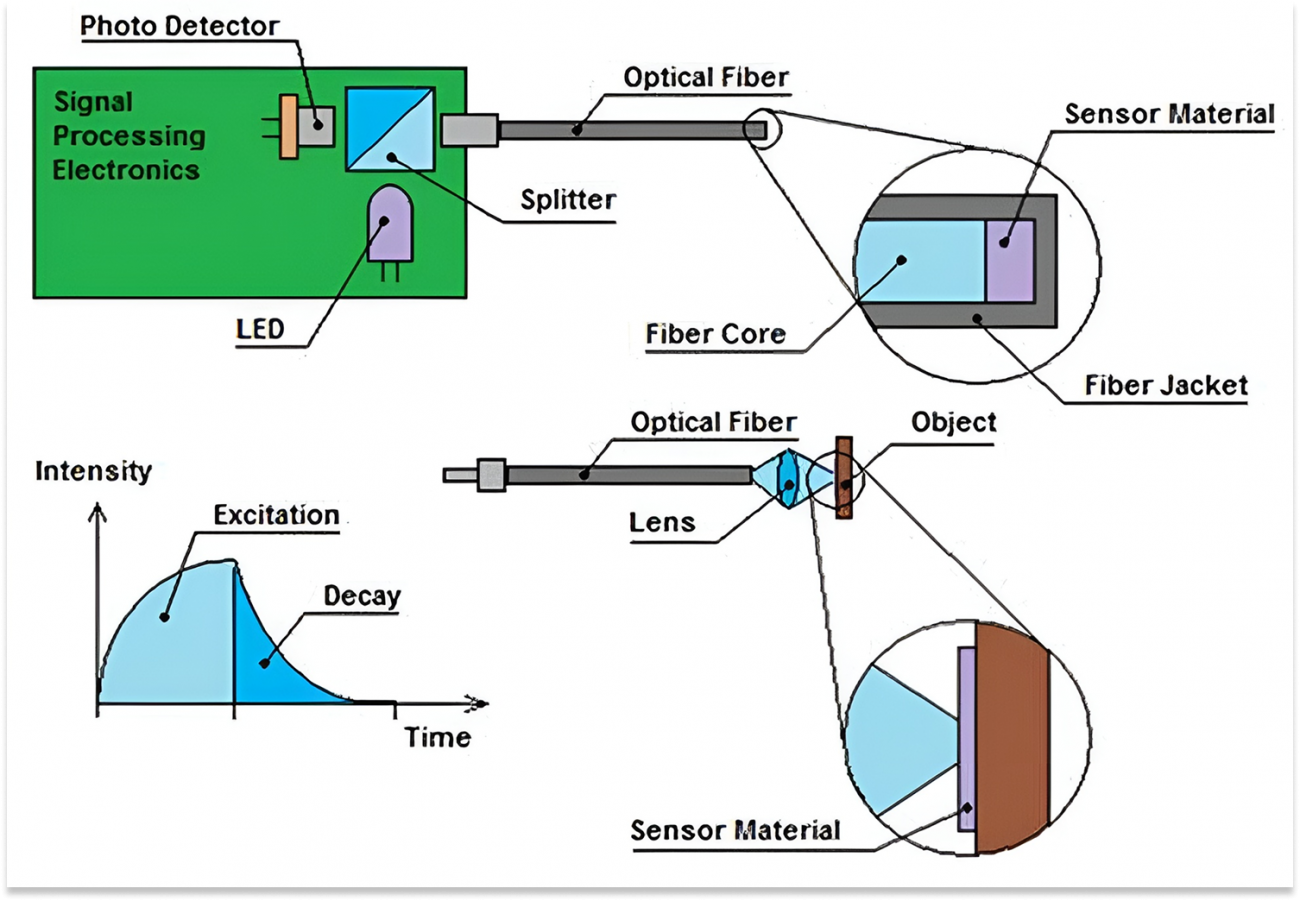2023
OSENSA’s Fluorescent Temperature Sensing

OSENSA’s technology works by exciting a fluorescent material at the end of an optical fiber. An LED is pulsed, launching light into the fiber through a dichroic beam splitter. When the excitation light hits the sensing material, it glows for a few milliseconds. The shorter time the material glows, the higher its temperature. We record the exponential decay curve and do calculations to create a calibration table equating the sensor material’s exponential decay time constant to its temperature.
As shown below, an LED is pulsed, coupling lower-wavelength (blue) light into an optical fiber. The light travels through the fiber to the tip where a phosphorescent material is excited and begins to emit higher-wavelength (red) light. The light emission intensity follows an exponential curve like the discharging of a capacitor in an RC (resistor-capacitor) circuit.
The fiber optic probe tip senses temperature when it contacts an object to be measured (similar to the way a thermocouple probe tip senses temperature when it contacts an object). OSENSA offers a number of different probe styles and geometries for a variety of applications in the range of -110°C to +750°C.






